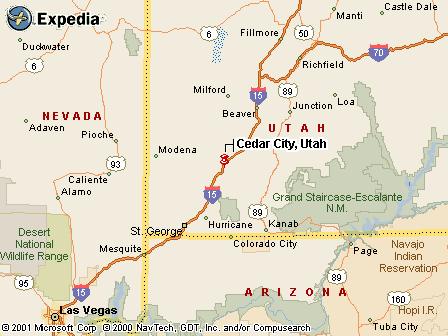|
|
Canku Ota |
|
|
(Many Paths) |
||
|
An Online Newsletter Celebrating Native America |
||
|
November 3, 2001 - Issue 48 |
||
|
|
||
|
Nurturing the Dying Art of Cradleboards |
||
|
by Tom Wharton-Salt Lake Tribune-October 27, 2001 |
 CEDAR CITY,
Idaho -- Eleanor Tom remembers putting each of her five children in traditional Paiute cradleboards made by her
mother-in-law. CEDAR CITY,
Idaho -- Eleanor Tom remembers putting each of her five children in traditional Paiute cradleboards made by her
mother-in-law."I put my babies in there so they would have a straight back and not be bowlegged," she says. "My babies cried for it. It feels like they are being held all the time." The boards served as a cradle, changing table, bath blanket and car seat. They were part of the Paiute birth ritual. Each cradleboard came with its own story and song, known only to mother and child. But, as important as this child-rearing tool was, Tom never made one. "Why should I learn when she could make it for me?" she says, remembering the boards in her mother-in-law's basement. When a grandson was born, Tom began searching for a cradleboard. She discovered the once essential tool was hard to find. She finally found an elderly woman from her husband's Goshute tribe in Nevada who still made them. That was a little over a year ago. Realizing cradleboard making could soon become a lost art and utilizing a state grant, Tom sought someone who could teach her. She found that her son's mother-in-law, Ernestine Lehi, knew how. She sometimes spent until 2 a.m. learning. "You don't want to give up," says Tom, who is now passing on the art to other Paiute women. "Once you start something, you have to finish it. That is a thing that goes with Indian people. If you do not finish, then your life is not complete." She laughs when describing her first effort, a small cradleboard built for a doll. She expressed surprise when it did not fall apart. As per tradition, she gave that first one away. It went to tribal leader Travis Parashonts, who had encouraged her. Traditional cradleboards do not have back straps. They aren't made from boards. The backs and small, decorated shade covers are made from willows -- fragrant sumac -- that are gathered in the spring and fall from nearby canyons. The covers are mostly made from canvas, though deer hides are used when available. Rags and deer hide ties connect the parts. Blankets are sometimes placed inside to make babies comfortable. On this day, Tom works with willows she gathered the night before. The bark has been carefully scraped off. "It was cold last night," she says. "I try to bend it while it is still wet. If you do it when it is dry, it will break. They crack really easily." Tom says the kinds of willows used in the boards are difficult to find. That is especially true this year because of the lack of moisture. It takes about two days for Tom to construct a small cradleboard used for a doll and longer for one to be used by a baby. Add time for the beadwork and decorations she sometimes adds and the cradleboards become works of art. That is not lost on those who collect American Indian artwork. Tom can sell the cradleboards almost as fast as she can make them. "The guys from the Olympics are buying them," she says with a smile. Tom learned many of her skills from her grandmothers who spoke mostly Paiute. Now, as she labors over her cradleboard, Tom no doubt recalls the stories and traditions she has learned. And she hopes to pass them on to others, keeping alive that which is so much a part of her life. |
|
|
|
Cradleboards |
|
|
||
|
|
||
| Canku Ota is a free Newsletter celebrating Native America, its traditions and accomplishments . We do not provide subscriber or visitor names to anyone. Some articles presented in Canku Ota may contain copyright material. We have received appropriate permissions for republishing any articles. Material appearing here is distributed without profit or monetary gain to those who have expressed an interest. This is in accordance with Title 17 U.S.C. section 107. | ||
|
Canku Ota is a copyright © 2000, 2001 of Vicki Lockard and Paul Barry. |
||
|
|
|
|
|
The "Canku Ota - A Newsletter Celebrating Native America" web site and its design is the |
||
|
Copyright © 1999, 2000, 2001 of Paul C. Barry. |
||
|
All Rights Reserved. |
||

